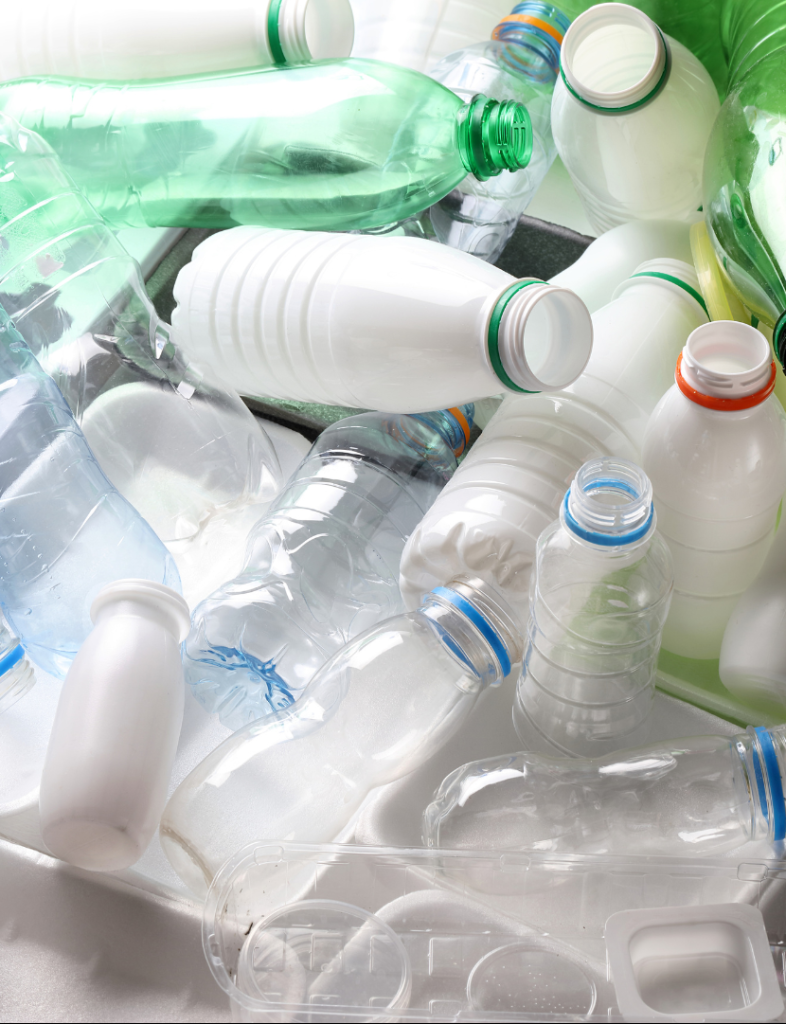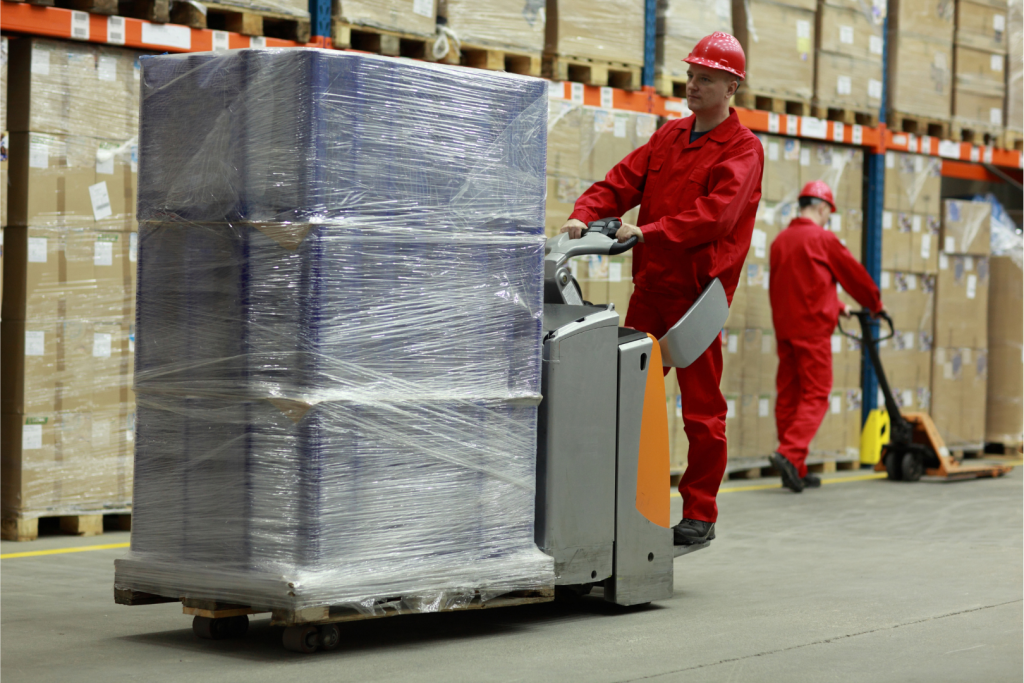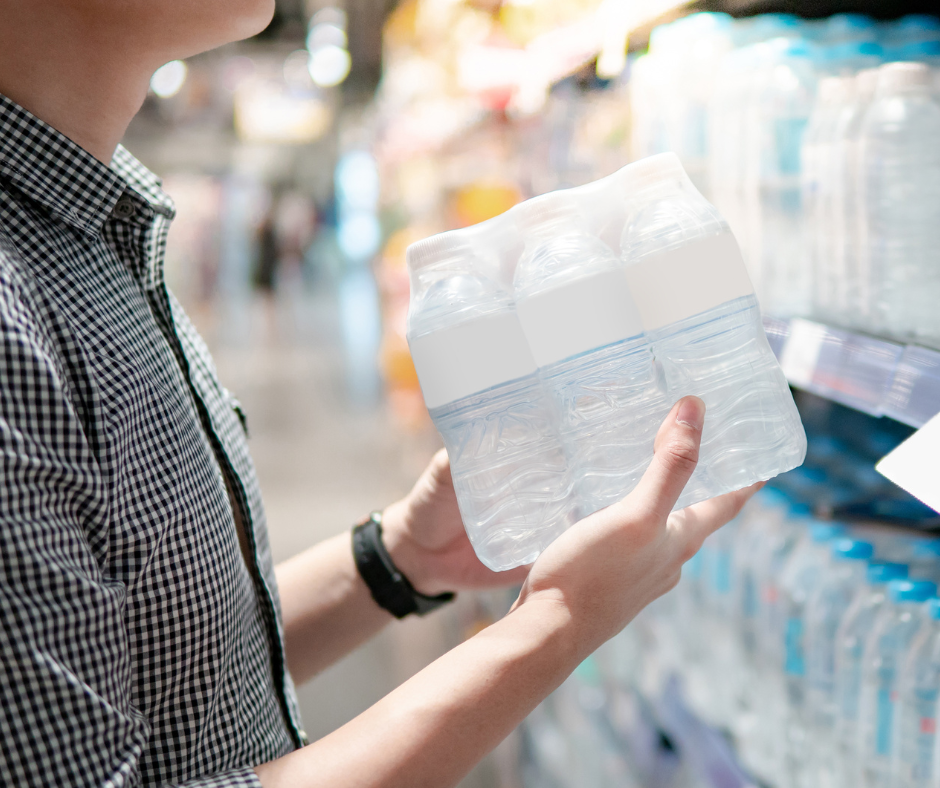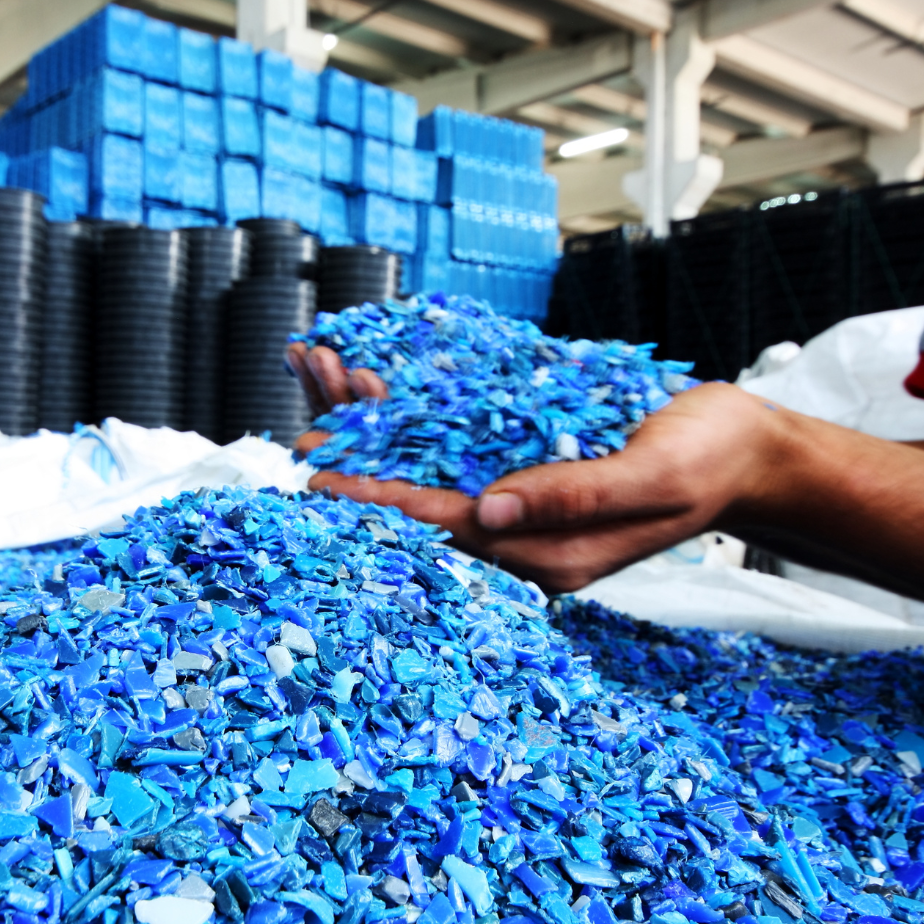The PPWR proposal could serve as a catalyst to transform the plastics packaging industry by ensuring recyclability, increasing the uptake of circular plastics and kick-starting reuse in many packaging applications. To this end, the legislation should create the positive investment climate to incentivise the European plastics system to continue its sustainability transition.

1. Plastics producers support recycled content targets for all types of plastics packaging
- Plastics Europe urges policy makers to maintain the 2030 mandatory recycled content targets set out in the PPWR proposal – including the 10% target for contact sensitive applications – as these targets are essential to support the plastics industry’s circularity and climate neutrality transitions:
- to boost the market for secondary raw material and reduce the need for fossil feedstock. Reducing GHG emissions and improving plastics’ circularity
- to provide sufficient legal certainty and regulatory incentives for the industry to continue its investments in chemical recycling technologies (estimated at potentially up to 8 bn euros by 2030)
- to improve mechanical recycling sorting and processing with the aim of ensuring the recycled plastics is of sufficient quality to be used for food contact applications
- We call for an enabling framework to support the achievement of the targets:
- Recycled content should be measured as an average per economic operator (not per-item) to allow producers more flexibility in meeting the requirements within their packaging portfolio while incorporating the same overall amount of recycled plastics.
- An EU harmonised framework to improve collection, sorting and investments in infrastructure
- Swift adoption of rules to calculate recycled content targets (including via mass balance)
2. Promoting the use of bio-based feedstock via complementary targets
- In addition to higher material circularity, direct GHG reduction system intervention is required for our industry to achieve climate neutrality by 2050. The PPWR should seize the opportunity to boost the potential of bio-based feedstocks in contributing to reducing both reliance on fossil feedstock and GHG emissions. However, this should not happen to the detriment of investments in recycling to boost circularity and a market for recycled material. We therefore call on policymakers to support a biobased target In packaging on top of the recycled content targets set out for 2030. Economic actors could also choose to meet this target via increased recycled content or via other circular feedstock sources such as captured CO2.
- When defining biobased plastics, it is important to highlight that the latter are not necessarily biodegradable, and only certain categories of bio-based plastics are able to biodegrade. We welcome the definition proposed by the Council Presidency capturing all specificities of bio-based plastics, and we would like to highlight the importance of maintaining a comprehensive definition of bio-based plastics as plastics wholly or partially made by biological sources, including biomass, agricultural feedstock and waste biomass.

3. Avoid reuse targets for transport packaging where no alternatives exist
- Plastics Europe supports reuse measures where carefully considered. Thanks to their versatility and durability, plastics provide potential for supporting reuse and refill systems in different applications while allowing for many loops before reaching their recyclable end of life.
- Derogations from reuse targets should apply where the reusability of packaging does not provide the best overall environmental outcome and where viable reusable options do not exist. An example are the flexible formats and pallet wrappings used for safe transportation In the supply chain. While the latter are recyclable and already recycled at scale, no viable solutions exist today for efficient, reusable alternatives. A reuse target on these types of transport packaging will therefore result in a de facto ban on packaging which is essential to safely transport product loads, allowing for load stability and preventing the product from being damaged or from causing accidents. Furthermore, the reuse target for transport packaging for home appliances is disproportionate as it does not take into account that these types of packaging vary hugely depending on the size, weight and other specific design features of each home appliance while allowing for shock-absorbing protection. Furthermore, the target would hinder functional and logistic requirements.
4. We oppose the introduction of a ban on single-use plastics grouped packaging in Annex V
- Grouped packaging like shrink wraps and collation films play an essential role in protecting the integrity of the goods packed and facilitating their transportation to consumers’ homes. Banning these types of packaging is discriminatory and disproportionate as these formats are already recyclable today and can be produced with high quantities of recycled plastics, while the environmental impact of any potential alternatives has not been considered.

5. Material and technology-neutral recyclability definition ensuring high-value retention
- The definition of recyclability and high-quality recycling cannot be based on the concept of closed loop (i.e. packaging to packaging recycling) only. Closed-loop recycling could make sense and be feasible only for targeted, limited cases and materials. Because of how the recycling and plastics production processes work across Europe (where the recycled output is a mix of different plastics wastes from different applications), closed-loop recycling would require a full reorganisation or creation of new processing lines per recycling plant per polymer and per application as well as production plants in all Member States each of which dedicated only to a specific application (packaging, furniture, consumers goods, etc). This solution is not economically viable nor environmentally sustainable so it would create several smaller product-to-product industrial plants with the consequent inefficient use of land, infrastructure, resources as well as energy for the processes. Recyclability based on closed-loop only can also lead to high material losses to achieve the quality of the recyclates necessary to be used in packaging while a combined approach of closed loop and open loop will allow the fossil feedstock to be replaced by recycled material also in other products resulting in greater value being retained in the economy with consequent GHG emission saving.
- Plastics Europe strongly opposes the Introduction of a negative list prohibiting the use of certain packaging materials or combination of materials considered as non-recyclable. Such a fixed list would act as an innovation brake, failing to consider advances through current and future innovations (in material composition, detection, infrastructures, recycling technologies, etc.). Such a list undermines confidence in future planned investments that allow for the recycling of many materials. The development of technology-neutral Design for Recycling (D4R) criteria is the best available option to reinforce a definition of recyclability that reflects industry’s ambitions to develop new packaging systems, new materials, detection, sorting and recycling technologies to achieve the required high qualities and recycling rotes. D4R criteria should be developed as soon as possible and not later than the end of 2026 and regularly updated, when necessary, by a neutral technical body of experts to assess actual packaging recyclability against state-of-the-art technologies and infrastructures.
6. The PPWR is not the appropriate tool to regulate hazardous substances or chemical safety
- Chemical hazards to health and environment are addressed already in the REACH regulation (the world’s most comprehensive chemicals management framework) and in other legislation, such as food contact material regulation. Any update to the PPWR should be considered in the context of the current and future revision of these legislations. Including provisions on hazardous substances in the PPWR would create a second layer of legislation that would create legal uncertainty and affect the proper implementation in the Member States.
- The presence of substances that might hinder recycling should be addressed in the context of the recyclability assessment based on Design for Recycling Guidelines.

We strongly welcome the MEPs’ support for mandatory recycled content targets for all types of plastic packaging, as they will create the right stimulus to boost the market for recycled plastics in Europe and to rump up investments in collection, sorting and recycling. We call on ENVI Committee’s MEPs to take this opinion into consideration for their final vote.
VIRGINIA JANSSENS – Managing Director of Plastics Europe
